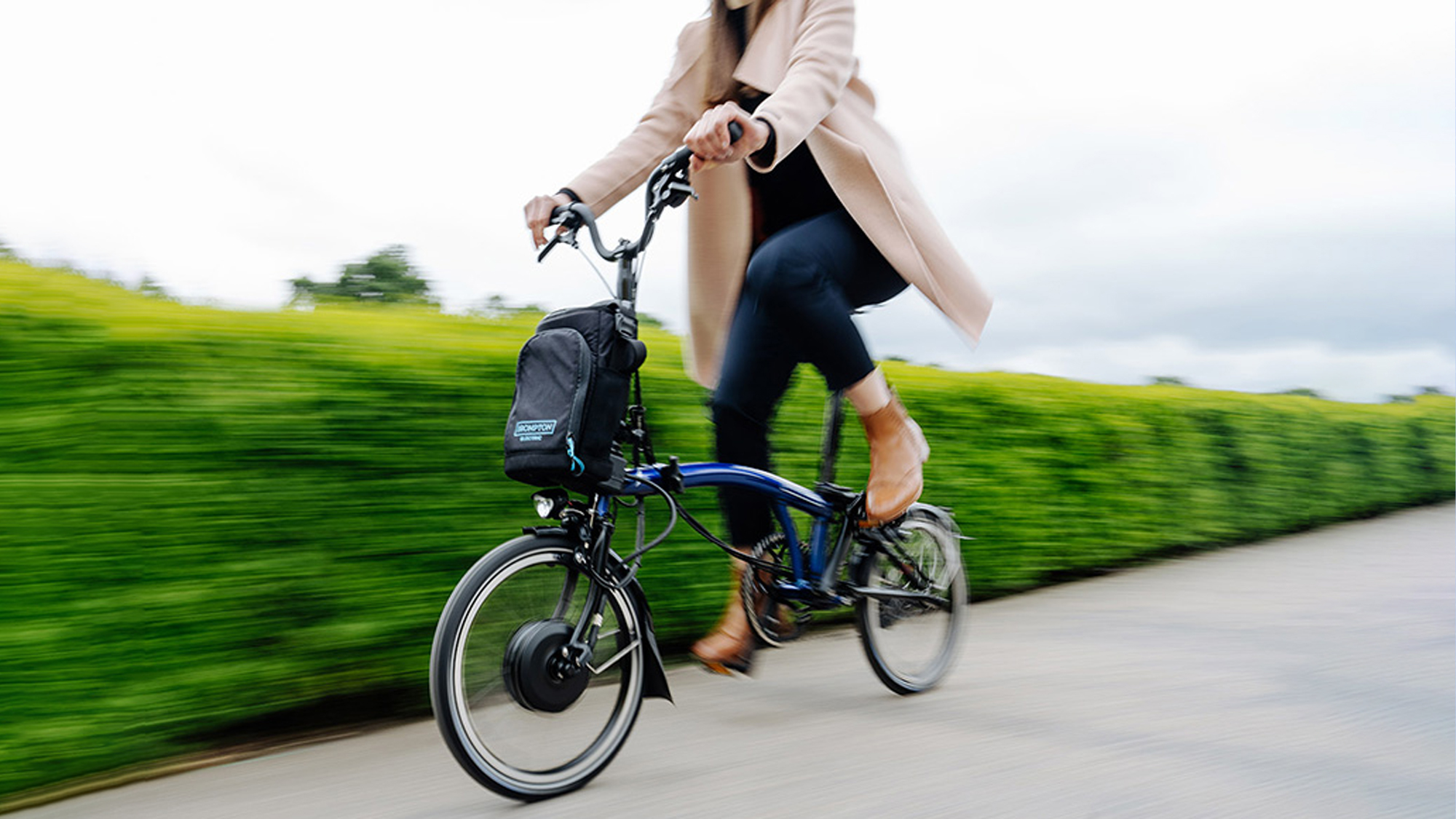7 safety tips when buying, using, and storing electric bikes
What to know before and after you buy

Electric bikes are increasing in popularity, but so are accidents involving the bikes' batteries catching fire. In New York City, there have been more than 100 fires this year involving electric bikes and scooters, resulting in 23 deaths.
But, electric bikes and electric scooters aren't going anywhere soon. So what do you need to know before buying an e-ride, and what are some safety tips for storing and recharging your bike or scooter?
To find out, we talked to Juliet Scott-Croxford, the president of Brompton North America. Brompton makes a range of folding bikes, such as the Brompton C-Line Explore, which are suited for urban commuters who don't have a lot of space, either at home or at their office, to store a full-size bike.
Answers have been edited for length and clarity.

Juliet Scott-Croxford has been the president of Brompton North America since 2021. Previously, she was the CEO of Worth Media and the Chief Delivery Officer for The Guardian.
When buying an electric bike, what should you look for in the battery?
If you’re on the market for a new electric bike, there are a few things one should look for to ensure you’re buying a ride that’ll last. The most important characteristic you want in your bike is quality – quality in manufacturing for the bike itself as well as the battery. A quality bike is one developed and certified to meet recognized safety standards.
Brompton e-bikes were developed in line with the EN15194 international standards for e-bikes and IEC62133 for batteries, promoting safe operation for consumers.
A good warranty is another helpful sign that you’re purchasing a quality product, indicating that the brand stands behind its product and guarantees it will last. Brompton initially offers a two-year warranty on its electric system and extends the warranty to three years upon registration; this is higher than other major industry competitors, which typically only offer a two-year warranty on their batteries.
What should you stay away from?
Price is one of the most important factors one should consider when making any purchase. Always be wary of inexpensive e-bikes, which may skimp on the quality assurance and testing required to ensure a safe product or that offer an attractive price but with no support or warranty. You get what you pay for. Look for a top-quality e-bike that is easy to take with you anywhere and built for the rigors of everyday life.
Additionally, we recommend U.S.-based consumers stay away from buying products from an overseas retailer and stick to purchasing directly from a local retailer that you may contact in case any issues occur. There are also strict controls on imports and, and the CPSC [Consumer Product Safety Commission] has the right to impound unsafe products at the port.
How should you properly charge a battery?
1. Read and follow the manufacturer’s instructions.
2. Never rely on an untested third-party product. Always use the official charger and wall adapter supplied by the bicycle manufacturer, plugging it directly into the wall. Brompton makes this easy by providing consumers with a charger that fits right into the built-in storage on the battery bag.
3. For extra peace of mind, unplug your battery when you are done charging. It’s a good practice to never leave a charging bike unattended, near potentially flammable objects or overnight when house occupants are sleeping.
How should you properly store an e-bike battery?
To help extend your e-bike’s life, learning how to properly store the battery is essential. For starters, your e-bike should always be kept in a ventilated and open space, out of direct sunlight and away from moisture. It’s also critical that your battery is stored in a space that doesn’t have extreme temperatures. Brompton batteries should be stored between 32° and 68°F, with 50°F being optimum.
If you’re planning to store the battery for a long duration, such as during the winter season, we recommend detaching the battery from the bike, if possible, and storing it in fireproof storage container. It’s recommended that batteries are not stored either fully empty or full. Brompton recommends 28%-47% of charge (2 lights on the charge indicator) for long-term storage to avoid damage.
What are some warning signs that your bike's battery might be damaged?
1. Check for physical signs of damage, particularly any cracks or openings in the casing.
2. If there is a strange smell, change of shape of the battery, leaking, smoking or if it feels unusually hot, then this is a sign that something may be wrong.
3. If the bicycle doesn’t behave as you’d expect it, or the battery or bike show warning codes, take it to your nearest retailer for inspection as soon as possible.
4. In addition to checking the battery, it’s important to check your charger for signs of damage. Do not use if the charger if the cable shows any signs of damage.
What should you do in case the battery catches fire?
In case of a fire emergency, do not attempt to extinguish the fire yourself. Instead, evacuate the area and dial 911 immediately.
Anything else you think is important for people to know?
Never convert your bike! It’s not designed for that and can potentially be dangerous while on the road! Opt for electric bikes that come off the shelf ready to ride, and perfect for the city.
Secondly, don’t modify or hack the power/speed! This can result in too much power being consumed from the battery which can cause hazards and lead to mechanical failure in the tires, brakes, etc. that are not designed to navigate a higher amount of speed. (Brompton’s system is locked to ensure safety.)
More from Tom's Guide
Sign up to get the BEST of Tom's Guide direct to your inbox.
Get instant access to breaking news, the hottest reviews, great deals and helpful tips.

Michael A. Prospero is the U.S. Editor-in-Chief for Tom’s Guide. He oversees all evergreen content and oversees the Homes, Smart Home, and Fitness/Wearables categories for the site. In his spare time, he also tests out the latest drones, electric scooters, and smart home gadgets, such as video doorbells. Before his tenure at Tom's Guide, he was the Reviews Editor for Laptop Magazine, a reporter at Fast Company, the Times of Trenton, and, many eons back, an intern at George magazine. He received his undergraduate degree from Boston College, where he worked on the campus newspaper The Heights, and then attended the Columbia University school of Journalism. When he’s not testing out the latest running watch, electric scooter, or skiing or training for a marathon, he’s probably using the latest sous vide machine, smoker, or pizza oven, to the delight — or chagrin — of his family.
